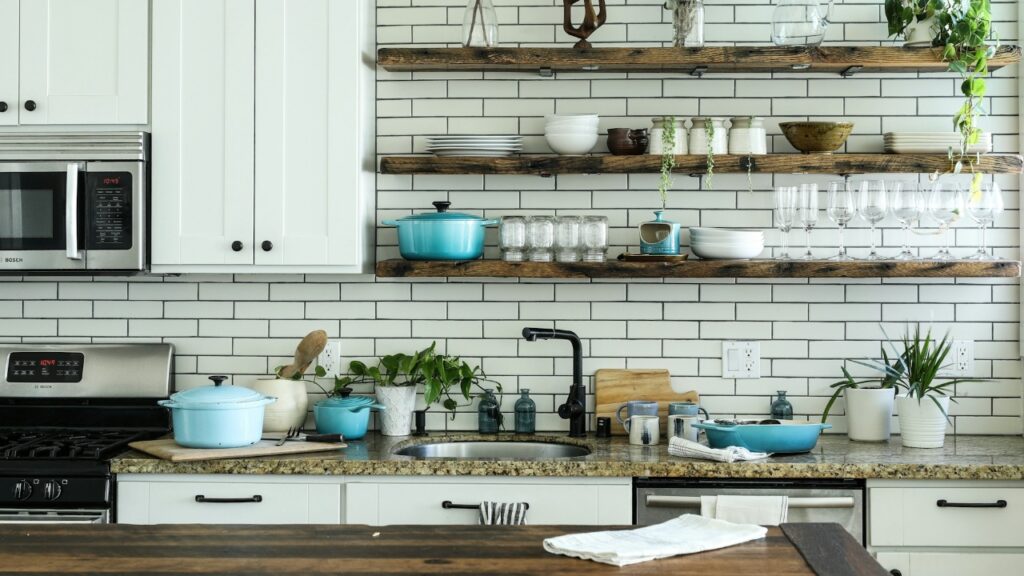Organizing a small kitchen, whether it has a pantry or not, requires strategic planning, clever storage solutions, and efficient use of available space. Here’s a comprehensive guide on organizing small kitchens to optimize functionality and create a clutter-free cooking environment.
Organizing a Small Kitchen with a Pantry:
1. Assess and Declutter:
- Start by decluttering the pantry space. Discard expired items, donate unused ones, and consolidate similar items.
2. Optimize Pantry Storage:
- Utilize vertical space with stackable shelves, hanging organizers, or over-the-door racks.
- Categorize items by type or frequency of use to streamline access.
3. Containerize and Label:
- Store loose items in labeled containers or bins to maintain order and ease of identification.
- Use clear containers to see contents easily and prevent food from going to waste.
4. Adjust Shelf Heights:
- Customize shelf heights to accommodate various-sized items and maximize vertical storage.
5. Utilize Door Space:
- Mount spice racks, hooks, or small baskets on the pantry door to store frequently used items or small jars.
6. Roll-Out Shelves or Drawers:
- Install roll-out shelves or drawers for easier access to items stored in the back of the pantry.
7. Group Similar Items:
- Arrange items in groups based on categories (canned goods, baking essentials, snacks) to maintain organization.
Organizing a Small Kitchen without a Pantry:
1. Create Dedicated Zones:
- Designate specific areas for different categories of items: cooking utensils, dry goods, spices, etc.
2. Maximize Cabinet Space:
- Use stackable shelves or organizers to double storage space within cabinets.
- Install hooks or racks on cabinet doors for additional storage.
3. Use Wall Space:
- Hang racks, magnetic strips, or shelves on walls to store pots, pans, and frequently used utensils.
4. Drawer Dividers:
- Utilize drawer dividers to organize cutlery, utensils, and other small items efficiently.
5. Vertical Storage Solutions:
- Install vertical racks or shelves to store cutting boards, baking sheets, and trays vertically to save space.
6. Under-Cabinet Storage:
- Utilize under-cabinet space with mounted racks or baskets to store spices, jars, or small kitchen tools.
7. Multi-Functional Furniture:
- Use furniture pieces with built-in storage, like kitchen carts with shelves or drawers, for added storage and mobility.
General Tips for Both Kitchen Types:
1. Downsize and Prioritize:
- Keep only essential items and donate or store infrequently used appliances or cookware.
- Prioritize items based on frequency of use, keeping daily essentials within easy reach.
2. Stackable and Nesting Containers:
- Opt for stackable containers or nesting bowls to save space and maintain a tidy appearance.
3. Frequent Maintenance:
- Regularly assess and reorganize to maintain order and prevent clutter from building up.
4. Utilize Labels and Transparent Containers:
- Label shelves, drawers, and containers to easily identify items. Transparent containers help in quickly spotting contents.
5. Optimize Countertops:
- Minimize countertop clutter by storing appliances that aren’t used daily in cabinets or shelves.
6. Incorporate Adjustable Shelving:
- Consider adjustable or modular shelving units that can be customized to fit various-sized items.
7. Utilize the Space Above Cabinets:
- Place decorative baskets or bins above cabinets to store items that aren’t used frequently.
Conclusion:
Organizing a small kitchen, whether with or without a pantry, requires thoughtful planning and maximizing every inch of available space. By employing smart storage solutions, decluttering regularly, and customizing storage areas to fit specific needs, a small kitchen can become an efficiently organized and functional cooking space. Tailoring the organization method to the kitchen’s layout and individual preferences ensures a clutter-free, well-organized culinary environment.


